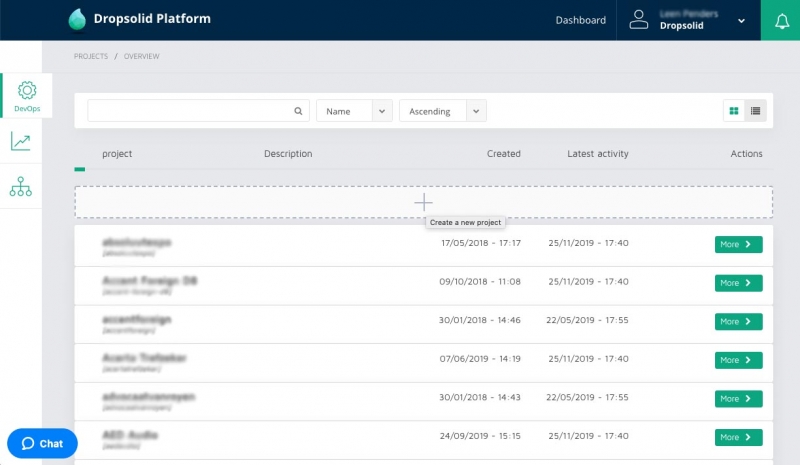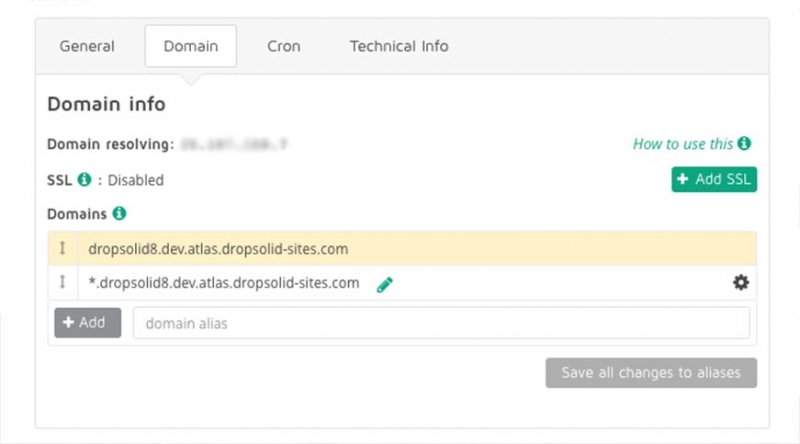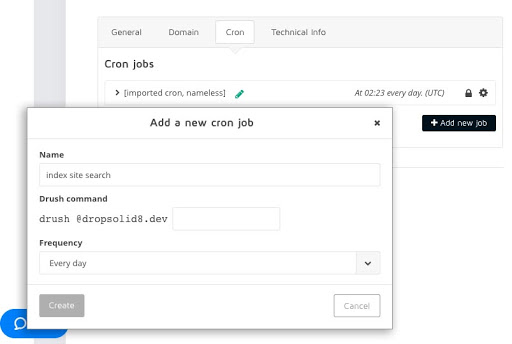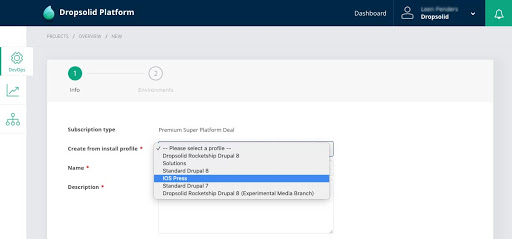Consider if hidden costs of DIY solutions are taking time away from your core business.
In this article, we’re going to look at the question of whether it’s better to “Buy or DIY” in terms of platform and hosting infrastructure. If you’re looking at the sticker price of paying for a service or building in-house, you may be overlooking the burden on other parts of your company in terms of customer support or acquisition.
Who’s building and who’s buying?
At DrupalCon Europe, we conducted a survey at our booth to gather insights into the tools you use everyday. For every completed survey, we committed to supporting a Drupal for developer for 15 mins to work on Drupal core.
And as a result, we donated 2190 minutes of core contribution time to Drupal. Thank you so much to the respondents who shared their experiences with us. By the way, subscribe to our newsletter and be the first to hear about the results.
For the developers who completed the survey we found out that:
- 44% were using some kind of platform provider.
- 27% of respondents were using a solution built and managed in-house.
- 28% had nothing at all, and they were doing things manually.
We were surprised! It seems like a large portion of respondents are spending a lot of time building and maintaining deployment infrastructure, or trying to manage without these tools. You have to start wondering what could be possible if you weren’t spending time on managing deployments and your teams could focus on your core business. We did that too, up until the point we turned our company into our product!
Is it better to DIY?
It’s unimaginable to consider building Drupal as a “DIY” solution today. Openhub’s model puts the Estimated Effort it took to build Drupal core at 1215 person-years. The Estimated Cost? $66,815,479 USD in total, just for Drupal core. Building that from scratch seems laughable, but many digital agencies and companies are still building their own custom CMSs.
In the true open source way, we don’t want to duplicate any work that is already out there. Yet, at the time we started building Dropsolid Experience Cloud, we couldn’t find anything like it, at any price tag.
It is a significant level of effort to build integrated tooling like this.
Baremetrics’ Build v Buy calculator puts the calculation in clear terms. If you have 1 or 2 staff people who need to spend 3-4 weeks to build a tool and then maintain it over time, it’s often not financially feasible to develop your own tooling. Building tools eats into the time that could be better spent on your services or products.
If you’re only setting up an environment once, and only working on one site, you have little need to standardize and automate your workflow. However, if you’re frequently setting up new environments, and working on many sites concurrently, it makes sense to automate. Especially if you have an urgent need to address a security update across 1300 sites.
Since we were building these tools for ourselves, we had to consider how new features were saving us time by also empowering our customers. In turn, our customers were surprised by the level of autonomy and control they were given. Next, let’s look at why this was different than they’d experienced before.
Giving our customers control and freedom
Many of our customers struggled in the past with having limited control and flexibility with their hosting and infrastructure (regardless of whether their provider was internal or external). For each task they wanted to complete, they had to file work requests or tickets which introduced delays and frustration.
Our System Administrator, Bruno Algoet, understands this from experience. “As a system administrator, I like giving the user as much freedom to do what they need to do without us having to intervene. So that means automating as much as possible.”
We started looking at ways we could improve our project execution times by making micro-tasks easier to complete and removing bottlenecks. For anyone who has already built these kinds of automated solutions, you know the benefits of investing in them. However, not everyone has the capacity and time to start building it out themselves.
Provision new sites in minutes
Our clients tell us that they used to wait up to a week to have a new site provisioned by an external provider, or even from an internal team. With Dropsolid Experience Cloud, they can log in, follow a few steps in a wizard and be live in 15 mins.
It may save you minutes, or even hours, and reduce the chances of error. Again, if you’re only managing one environment, it’s not so bad. When you have hundreds of environments, and many colleagues working on them, then you’ll notice the cost savings.
The time to fill out a ticket is negligible, but how long are you waiting? Does it ever interfere with the pace of development because it’s taking a few days to get a site provisioned?

Enable SSL with a click of a button
Consider the lead time it takes to enable SSL on an environment.
Bruno said “Customers are surprised by what they can do with our Platform. ‘Hey, I can click a button and enable HTTPS!’” Many of the system’s improvements come from our customers, and even people on our own team as users. “A part of it is me being selfish and wanting less of that redundant work… If I’m doing something manually, automating it could save me time and frustration. Tasks also get faster for our customers and then their work is less prone to errors.”

Calm cron job management
Managing cron jobs is another way our Platform introduces time and cost savings. Cron jobs are a utility to schedule routine maintenance scripts to run at specific times, for example indexing the site for search, or pruning system logs. One of the issues with cron jobs is that you might have scheduled a task that is resource-intensive and it ends up clashing with another task already scheduled. Then you have to go in, figure out where the issue is and fix it.
We created a calm cron management system that takes care of it for you. You tell Dropsolid Platform what you need to do, and the frequency and our platform figures out the best time to schedule it within the timeframe, taking other cron jobs into consideration.

Those are just a few of the ways the Dropsolid Platform gives you faster time to market and a consistent development process.
Empowering teams to do more
We’re focused on enabling web development teams to do more and wait for less. I’ve been speaking directly to customers to find out how this has impacted their work.
Our customer IOS Press tells us one of the best things they have experienced with our entire Digital Experience Platform approach is a drastic decrease in time to market for launching new campaign sites.
The IOS Press publishing house manages 80+ scientific and medical journals for a worldwide audience. When they came to us, they had no interoperability between their sites. They had to deal with many different platforms and vendors. This was the biggest blocker preventing them from speeding up content production so they could grow the community and increase engagement around their journals.
We tailor-made an installer for new IOS Press campaign sites, and this saves them precious developer resources. Dropsolid Rocketship isn’t a blank slate, it allows their team to easily re-use website components. And the high maintenance of dealing with multiple platforms and vendors was resolved with a quick Dropsolid Platform installer that enabled them to deploy new sites in minutes.
In Dropsolid Experience Cloud, you can add your own custom installer, which allows your team to quickly provision and build on new websites.

Uncover hidden costs in your dev-to-deploy process
We’ve prepared a checklist to help you uncover hidden costs. If you’re looking at the sticker price of paying for a service provider, also look at some of the hidden costs.
To start, you could consider how long it takes your developers to complete a task and then multiply that by how often they have to do those tasks. You would then compare that to how long it would take to build and maintain an automated solution, or how much it would cost to purchase a solution.
What you won’t know is what the wider impact will be. One of the things we’ve noticed when talking with customers is that they don’t realize that things could be any different. Unfortunately, they just assume these irritations are a part of the way web development has to be.
When we calculate hidden costs we should also take into account how long consultants and employees are sitting idle because they are waiting for someone else to complete a task. Perhaps your teams are used to raising tickets for manual tasks on their traditional hosting. Maybe they have accepted long waiting times, and they account for these in project planning in the most efficient way they can.
Especially if teams are budget sensitive because their work is seen as a cost-center rather than a capital investment, these minor problems add up. Your teams may be wasting time and money where it could be better spent on your core business.